#solar power consumption
Explore tagged Tumblr posts
Text
Hybrid solar systems offering greater solar power consumption and storage by leveraging the integration of multiple technologies. Four Solar is a professional EPC company that has undertaken projects totaling to more than 35 MW in India and other countries. We are committed to delivering premier and creative energy solutions. We emphasize on Design and Engineering models while considering the aesthetic appeal. We use a proven financial ROI model.
#hybrid solar system#hybrid solar panels#hybrid solar inverter#solar power consumption#solar energy for future usage
0 notes
Text
How to Build Your Own Bitcoin Mining Data Center (Bitaxe Edition) + Spread Sheet Included
Embarking on the journey to create my own Bitcoin mining data center has been an exciting endeavor, involving precise planning, careful equipment selection, and a focus on efficiency. Here’s a breakdown of the components I’m using and why each one is essential for achieving a streamlined mining operation. The cornerstone of my setup is the Bitaxe Gamma 601 SOLO Miner. With a hash rate of 1.2…
#2.4 GHz frequency#Bitaxe Gamma 601#Bitaxe HEX#Bitcoin#bitcoin mining#bitcoin mining data center#Bitcoin portfolio#blockchain#crypto#cryptocurrency#data center#energy efficiency#Ethereum#hash rate#mining efficiency#mining operation#mining setup#power backup#power consumption#science#solar power#technology#WiFi connectivity
0 notes
Text
The Best Eco-Tech Products for an Energy-Efficient Home
Introduction
The newly developed innovations regarding eco-tech products have become necessary when building an energy-efficient house. Yet such innovation does not only lead to energy consumption reduction but also pulls efforts towards a sustainable future. Well, TechtoIO is forever committed to bringing the latest eco-tech products that make your home smarter, greener, and more performant. Here are the top products to make your house a comfortable and efficient sanctuary.
Now, with the Smart thermostats are one of the game-changers in energy-efficient homes. They learn your habits and optimize the temperature based on your habits and preferences so energy isn’t wasted when you’re not around. Among other smart devices, energy usage reporting with remote control in some popular monitored models include Nest Learning Thermostats and Ecobee SmartThermostat with voice control.
Optimized with significant energy savings, courtesy of smart thermostats, the efficiency of heating and cooling systems can increase. Read to continue link
#Eco-Tech#Tagsbenefits of smart thermostats#best eco-tech products 2024#best LED lighting options#eco-friendly home products#electric vehicle charging stations#Energy Star rated appliances#energy-efficient lighting solutions#home energy monitoring systems#how solar panels work#integrating smart home devices#reducing home energy consumption#smart home energy management#smart irrigation systems#smart plugs and power strips#smart thermostats for energy efficiency#solar panels for homes#sustainable home technology#top energy-efficient appliances#water-saving devices for homes#weatherproofing for energy efficiency#Technology#Science#business tech#Adobe cloud#Trends#Nvidia Drive#Analysis#Tech news#Science updates
1 note
·
View note
Text
Harnessing the Sun: A Comprehensive Guide to Solar Systems for Your Home
In a world where sustainability and renewable energy are at the forefront of technological advancements, harnessing the power of the sun has emerged as a promising solution. Solar systems for homes offer a gateway to cleaner, more affordable energy while reducing our carbon footprint. In this comprehensive guide, we delve into the intricacies of solar systems, exploring their benefits, components, installation process, and economic considerations.
Understanding Solar Systems:
At its core, a solar system for home consists of photovoltaic (PV) panels, an inverter, mounting hardware, and a monitoring system. These components work together to convert sunlight into electricity, which can power your home’s appliances, lighting, and other electrical devices. The process begins with sunlight hitting the PV panels, where semiconductor materials such as silicon absorb the photons and generate a flow of electrons, creating an electric current. The inverter then converts this direct current (DC) into alternating current (AC), which is compatible with your home’s electrical system.
Benefits of Solar Systems:
youtube
Cost Savings: By generating your own electricity, you can significantly reduce or eliminate your monthly utility bills, providing long-term savings on energy costs.
Environmental Impact: Solar energy is clean and renewable, producing no greenhouse gas emissions or pollutants during operation, thus mitigating climate change and reducing dependence on fossil fuels.
Energy Independence: With a solar system in place, you become less reliant on the grid, providing resilience against power outages and fluctuations in energy prices.
Increased Property Value: Homes equipped with solar systems often have higher resale values and appeal to eco-conscious buyers.
Government Incentives: Many governments offer incentives such as tax credits, rebates, and net metering programs to encourage the adoption of solar energy, further enhancing its affordability.
Components of a Solar System:
PV Panels: These are the heart of the system, comprised of multiple solar cells that convert sunlight into electricity.
Inverter: Converts the DC electricity generated by the panels into AC electricity suitable for household use.
Mounting Hardware: Secures the panels to the roof or ground, ensuring optimal orientation and angle for maximum sunlight exposure.
Monitoring System: Allows homeowners to track the performance of their solar system in real-time, monitoring energy production and identifying any issues promptly.
Installation Process:

Site Assessment: A professional installer evaluates your property to determine its suitability for solar installation, considering factors such as roof orientation, shading, and structural integrity.
Design and Permitting: Based on the site assessment, a customized solar system design is created, taking into account your energy needs and aesthetic preferences. The necessary permits are then obtained from local authorities.
Installation: The PV panels, inverter, and mounting hardware are installed according to the approved design, typically taking a few days to complete.
Connection to the Grid: Once the system is installed, it is connected to the electrical grid through a process called interconnection, allowing for the seamless exchange of electricity between your home and the grid.
Commissioning and Testing: The system undergoes thorough testing and commissioning to ensure it is functioning optimally and safely.
Monitoring and Maintenance: After installation, regular monitoring and maintenance are essential to ensure the continued performance and longevity of the solar system.
Economic Considerations:
While the upfront cost of installing a solar system for your home can be significant, it is essential to consider the long-term financial benefits. Factors to consider include:
Return on Investment (ROI): Calculating the payback period by comparing the upfront cost of the system to the savings on energy bills over its lifespan.
Financing Options: Exploring financing options such as solar loans, leases, or power purchase agreements (PPAs) to make solar more accessible with little to no upfront cost.
Tax Incentives and Rebates: Taking advantage of available incentives such as federal tax credits, state rebates, and utility incentives to reduce the cost of installation.
Net Metering: Leveraging net metering programs to receive credits for excess energy generated by your solar system, further reducing your electricity costs.
Conclusion:
Solar systems for homes represent a transformative solution to the pressing challenges of climate change and energy sustainability. By harnessing the power of the sun, homeowners can enjoy cost savings, environmental benefits, and energy independence. With advancements in technology and supportive government policies, solar energy is becoming increasingly accessible and affordable for households worldwide. Embracing solar power is not just an investment in a brighter future but a commitment to a cleaner, greener planet for generations to come.
#solar energy#solar power system#solar rooftop system#solar installation#solar consumption#solar panels#Youtube
1 note
·
View note
Text
Inconvenient data about electricity generation
I like a good infographic and this one showing annual energy flows for a country is one of my favourites [see ‘Energy blending’ on May 22nd 2013]. Some governments produce them annually. The image shows the latest one for the UK [2021]. It makes interesting but perhaps depressing reading. Transportation using fossil fuels accounts for 31% (41.6/134.1 million tonnes oil equivalent) of the UK…
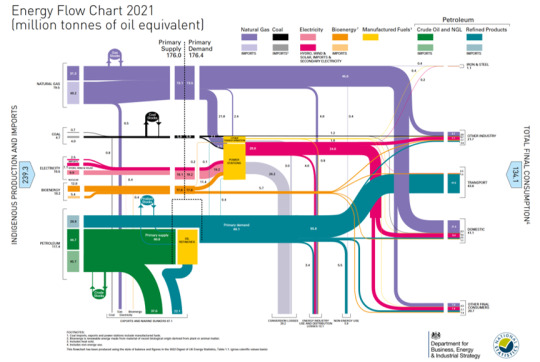
View On WordPress
#electricity#energy#energy consumption#energy flows#fossil fuel#nuclear energy#power stations#renewable energy#solar energy#transport#wind energy
0 notes
Text
"A 1-megawatt sand battery that can store up to 100 megawatt hours of thermal energy will be 10 times larger than a prototype already in use.
The new sand battery will eliminate the need for oil-based energy consumption for the entire town of town of Pornainen, Finland.
Sand gets charged with clean electricity and stored for use within a local grid.
Finland is doing sand batteries big. Polar Night Energy already showed off an early commercialized version of a sand battery in Kankaanpää in 2022, but a new sand battery 10 times that size is about to fully rid the town of Pornainen, Finland of its need for oil-based energy.
In cooperation with the local Finnish district heating company Loviisan Lämpö, Polar Night Energy will develop a 1-megawatt sand battery capable of storing up to 100 megawatt hours of thermal energy.
“With the sand battery,” Mikko Paajanen, CEO of Loviisan Lämpö, said in a statement, “we can significantly reduce energy produced by combustion and completely eliminate the use of oil.”
Polar Night Energy introduced the first commercial sand battery in 2022, with local energy utility Vatajankoski. “Its main purpose is to work as a high-power and high-capacity reservoir for excess wind and solar energy,” Markku Ylönen, Polar Nigh Energy’s co-founder and CTO, said in a statement at the time. “The energy is stored as heat, which can be used to heat homes, or to provide hot steam and high temperature process heat to industries that are often fossil-fuel dependent.” ...
Sand—a high-density, low-cost material that the construction industry discards [Note: 6/13/24: Turns out that's not true! See note at the bottom for more info.] —is a solid material that can heat to well above the boiling point of water and can store several times the amount of energy of a water tank. While sand doesn’t store electricity, it stores energy in the form of heat. To mine the heat, cool air blows through pipes, heating up as it passes through the unit. It can then be used to convert water into steam or heat water in an air-to-water heat exchanger. The heat can also be converted back to electricity, albeit with electricity losses, through the use of a turbine.
In Pornainen, Paajanen believes that—just by switching to a sand battery—the town can achieve a nearly 70 percent reduction in emissions from the district heating network and keep about 160 tons of carbon dioxide out of the atmosphere annually. In addition to eliminating the usage of oil, they expect to decrease woodchip combustion by about 60 percent.
The sand battery will arrive ready for use, about 42 feet tall and 49 feet wide. The new project’s thermal storage medium is largely comprised of soapstone, a byproduct of Tulikivi’s production of heat-retaining fireplaces. It should take about 13 months to get the new project online, but once it’s up and running, the Pornainen battery will provide thermal energy storage capacity capable of meeting almost one month of summer heat demand and one week of winter heat demand without recharging.
“We want to enable the growth of renewable energy,” Paajanen said. “The sand battery is designed to participate in all Fingrid’s reserve and balancing power markets. It helps to keep the electricity grid balanced as the share of wind and solar energy in the grid increases.”"
-via Popular Mechanics, March 13, 2024
--
Note: I've been keeping an eye on sand batteries for a while, and this is really exciting to see. We need alternatives to lithium batteries ASAP, due to the grave human rights abuses and environmental damage caused by lithium mining, and sand batteries look like a really good solution for grid-scale energy storage.
--
Note 6/13/24: Unfortunately, turns out there are substantial issues with sand batteries as well, due to sand scarcity. More details from a lovely asker here, sources on sand scarcity being a thing at the links: x, x, x, x, x
#sand#sand battery#lithium#lithium battery#batteries#technology news#renewable energy#clean energy#fossil fuels#renewables#finland#good news#hope#climate hope
1K notes
·
View notes
Text
Instead of burning fossil fuels to reach the temperatures needed to smelt steel and cook cement, scientists in Switzerland want to use heat from the sun. The proof-of-concept study uses synthetic quartz to trap solar energy at temperatures over 1,000°C (1,832°F), demonstrating the method’s potential role in providing clean energy for carbon-intensive industries. A paper on the research was published on May 15 in the journal Device.[...]
Glass, steel, cement, and ceramics are at the very heart of modern civilization, essential for building everything from car engines to skyscrapers. However, manufacturing these materials demands temperatures over 1,000°C and relies heavily on burning fossil fuels for heat. These industries account for about 25% of global energy consumption. Researchers have explored a clean-energy alternative using solar receivers, which concentrate and build heat with thousands of sun-tracking mirrors. However, this technology has difficulties transferring solar energy efficiently above 1,000°C.
To boost the efficiency of solar receivers, Casati turned to semitransparent materials such as quartz, which can trap sunlight—a phenomenon called the thermal-trap effect. The team crafted a thermal-trapping device by attaching a synthetic quartz rod to an opaque silicon disk as an energy absorber. When they exposed the device to an energy flux equivalent to the light coming from 136 suns, the absorber plate reached 1,050°C (1,922°F), whereas the other end of the quartz rod remained at 600°C (1,112°F).
“Previous research has only managed to demonstrate the thermal-trap effect up to 170°C (338°F),” says Casati. “Our research showed that solar thermal trapping works not just at low temperatures, but well above 1,000°C. This is crucial to show its potential for real-world industrial applications.”
Using a heat transfer model, the team also simulated the quartz’s thermal-trapping efficiency under different conditions. The model showed that thermal trapping achieves the target temperature at lower concentrations with the same performance, or at higher thermal efficiency for equal concentration. For example, a state-of-the-art (unshielded) receiver has an efficiency of 40% at 1,200°C, with a concentration of 500 suns. The receiver shielded with 300 mm of quartz achieves 70% efficiency at the same temperature and concentration. The unshielded receiver requires at least 1,000 suns of concentration for comparable performance.
17 May 24
1K notes
·
View notes
Text
China May Be Reaching It's Emissions Peak Ahead of Goal

Image and text from this Bloomberg article.
From the article:
Now the factors that have propelled China’s climate-wrecking spree appear to be retreating. An unprecedented adoption of solar, wind and other clean power sources has begun to limit the country's coal consumption. Just as importantly, a sagging economy that saw growth slow in the third quarter to the weakest pace in 18 months has cooled the most emissions-intensive corners of heavy industry like steel and cement. And President Xi Jinping’s long-term strategy is for a permanent shift from polluting sectors to cleaner, high-tech manufacturing. That combination has put China on course for a scenario considered almost inconceivable at the start of this decade — the country’s carbon emissions may already have peaked, well ahead of Xi’s 2030 deadline.
#climate change#global warming#hope#good news#fossil fuels#green energy#solar energy#sustainability#hopepunk#climate optimism#positivity#radical optimism#climate anxiety#environment#environmental anxiety#ecoanxiety
402 notes
·
View notes
Text
East Palace, West Palace in ep5 of Blue Canvas of Youthful Days
I have been punched in the solar plexus by Blue Canvas of Youthful Days episode 5. So much happens in that episode that is overwhelming, from Qi Lu setting up a Netflix-and-chill date with the clear intention of making a move, to his putting on the famous film East Palace, West Palace (1996), to Qi Lu hiding Qin Xiao in the closet, to Qi Lu's panic at his father realizing he's been lied to, to the devastatingly practiced way Teacher Liu steps to Qi Lu being abused and handles his father, to the way Qi Lu shuts down, to the way QIn Xiao keeps sending mixed signals and Qi Lu calls him on it directly. And nobody else in this episode let me rest either; Tan Fan trying to ask Teacher Liu to wait for him and Liu brushing him off AGAIN, and Turtle trying to call out
@lurkingshan was already more coherent than I can be right now about what happened in the episode in her post.
So instead I want to focus on some queer cinema history that this episode evoked by using East Palace, West Palace as the film that Qi Lu shows to QIn Xiao.
For those who don't know, EPWP is considered to be the first realistic depiction of a gay man in film by a mainland Chinese production. It is to my knowledge the first time a gay man says "I love you" to another man on screen. It was made before being gay was decriminalized in China (1997), and it was filmed by an independent production company and smuggled out of China to France in order to be finished and distributed. It ended up at the Cannes festival in 1997, but the director's passport was seized and he was placed under house arrest to prevent him from attending. Despite pressure to pull the film, it still aired that year. In 1998, the Film Law was passed to prevent anyone from making films outside of the studio system (and therefore censorship review), effectively preventing anything like EPWP from being made in the future.
The film is about a gay man who cruises in the notorious bathrooms in the parks on either side of Tiananmen Square getting harassed by police officers (a situation extremely familiar to the historical queer experience in Canada [where I'm from] as well) and playing what I'd describe as a psychological game with one of them; A Lan kisses the cop, runs, and then gets caught a second time, and uses the second police confession as an excuse to tell his life's story in the public record, all while pushing the police officer a little further into deviance. As far as I'm aware, this film has been banned in China since being made and never shown (please correct me if I'm wrong about that!).
This is hitting me hard because of the much more recent history of Blue Canvas of Youthful Days itself. As most of you know, but I'll capture here for posterity, episodes 1-4 of this show aired on iQIYI (a China-based app) on August 6, and within 24 hours they were pulled from the app with no information about the future episodes being shown. When I watched episode 5 today, after waiting for it for 3 months, I was immediately hit with a wave of anger that this gorgeous, emotionally moving and powerful episode had been held back from public consumption for months, for the same reasons that the film being shown within the episode had been withheld from viewing in its own country.
Censorship is such an ugly thing, it's hard to articulate but the emotions around it are so strong because we know, when they pull or refuse to show media that depicts our lives, it's because they don't want our lives to be real; they don't want us to exist. It's a very real threat. And to have this episode--which is all about an abused boy who is in very real danger but so bravely insisting that he shoot his shot and take his best chance at love and happiness anyway, using the iconic confession scene from one of the most famous banned films in Chinese queer cinema history to do it--to have this episode be the one that was prevented from airing......I am overwhelmed.
In the scenes they watch in episode 5, A Lan tries to prevent the officer from uncuffing him, and then the officer lets him go, but A Lan doesn't go far and comes back. He declares his love to the officer's face, and demands that his love be acknowledged and not dismissed. And the officer does not know what to do with it and reacts with violence, which is partially what A Lan has been angling at all along. The show really played with this by having all three of the couples in the show stymied by having their overtures dismissed this episode, but we almost didn't get to see it.
I'm so grateful this got distribution now, and on multiple platforms. Blue Canvas of Youthful Days is airing Saturdays and Sundays on GagaOOLala and Youtube (note, as per @thisonelikesaliens's excellent language posts, the subs on Gaga are much better), and on Mondays on Viki. I know there is an avalanche of content right now, but this show is so good and worked so hard to make it to us, please give it some love!
#blue canvas of youthful days#east palace west palace (1996)#typed so that i can stop thinking it#queer history
96 notes
·
View notes
Text
Thinking about Nona’s reaction to Paul. Thinking about Alecto’s reaction to the lyctors. Maybe that's why John institutionalized her. And why the surviving lyctors are horrified of her.
John tells Alecto some clever lie about what happened to the others, we know Alecto knew them because Pyrrha knew her. And then she sees the lyctors and she sees their cavs’ movements in them, and she knows what they've done to appease John. And that’s her last straw. That John led them to do what he did to her, eat their souls then trap them in a body for the sake of an eternal power source. Worse this time.
She accepts that John must be stopped. Once is an accident, nine times is a pattern. He's not the man he was when she cried out for help all those years ago. Maybe he never was.
Anyways, from what we know about Anastasia, the timelines line up. Anastasia "misapprehends" lyctorhood and then she's sent to the Ninth to oversee Alecto's internment. So Alecto is put to sleep shortly after the original lyctor trials.
That’s my theory, but knowing tazmuir its 100% something infinitely more complex and fucked than that.
Also the irony that John kills the earth to turn it into a power source and that that's what almost killed it (fossil fuels, fracking, overconsumption, etc.)* in the first place is not lost on me. John is no better than the billionaires he sought to destroy. He thinks he's different because he uses death magic instead of machinery to enact his violence, but it's the same violence. Tazmuir is a genius per usual.
*My knowledge of environmental concerns is limited lmao but hopefully you get the parallel I'm drawing there. Some of the worst industries for the environment are about sourcing energy. It's also the capitalistic over consumption too, draining the earth. And then John turns her into a necromantic battery powering the solar system.
#im sure someone has suggested this before#this also might actually just be in the text/implied and im forgetting#the locked tomb#alectopause#tlt meta#tlt#alecto
72 notes
·
View notes
Text
Real innovation vs Silicon Valley nonsense

This is the LAST DAY to get my bestselling solarpunk utopian novel THE LOST CAUSE (2023) as a $2.99, DRM-free ebook!

If there was any area where we needed a lot of "innovation," it's in climate tech. We've already blown through numerous points-of-no-return for a habitable Earth, and the pace is accelerating.
Silicon Valley claims to be the epicenter of American innovation, but what passes for innovation in Silicon Valley is some combination of nonsense, climate-wrecking tech, and climate-wrecking nonsense tech. Forget Jeff Hammerbacher's lament about "the best minds of my generation thinking about how to make people click ads." Today's best-paid, best-trained technologists are enlisted to making boobytrapped IoT gadgets:
https://pluralistic.net/2024/05/24/record-scratch/#autoenshittification
Planet-destroying cryptocurrency scams:
https://pluralistic.net/2024/02/15/your-new-first-name/#that-dagger-tho
NFT frauds:
https://pluralistic.net/2022/02/06/crypto-copyright-%f0%9f%a4%a1%f0%9f%92%a9/
Or planet-destroying AI frauds:
https://pluralistic.net/2024/01/29/pay-no-attention/#to-the-little-man-behind-the-curtain
If that was the best "innovation" the human race had to offer, we'd be fucking doomed.
But – as Ryan Cooper writes for The American Prospect – there's a far more dynamic, consequential, useful and exciting innovation revolution underway, thanks to muscular public spending on climate tech:
https://prospect.org/environment/2024-05-30-green-energy-revolution-real-innovation/
The green energy revolution – funded by the Bipartisan Infrastructure Act, the Inflation Reduction Act, the CHIPS Act and the Science Act – is accomplishing amazing feats, which are barely registering amid the clamor of AI nonsense and other hype. I did an interview a while ago about my climate novel The Lost Cause and the interviewer wanted to know what role AI would play in resolving the climate emergency. I was momentarily speechless, then I said, "Well, I guess maybe all the energy used to train and operate models could make it much worse? What role do you think it could play?" The interviewer had no answer.
Here's brief tour of the revolution:
2023 saw 32GW of new solar energy come online in the USA (up 50% from 2022);
Wind increased from 118GW to 141GW;
Grid-scale batteries doubled in 2023 and will double again in 2024;
EV sales increased from 20,000 to 90,000/month.
https://www.whitehouse.gov/briefing-room/blog/2023/12/19/building-a-thriving-clean-energy-economy-in-2023-and-beyond/
The cost of clean energy is plummeting, and that's triggering other areas of innovation, like using "hot rocks" to replace fossil fuel heat (25% of overall US energy consumption):
https://rondo.com/products
Increasing our access to cheap, clean energy will require a lot of materials, and material production is very carbon intensive. Luckily, the existing supply of cheap, clean energy is fueling "green steel" production experiments:
https://www.wdam.com/2024/03/25/americas-1st-green-steel-plant-coming-perry-county-1b-federal-investment/
Cheap, clean energy also makes it possible to recover valuable minerals from aluminum production tailings, a process that doubles as site-remediation:
https://interestingengineering.com/innovation/toxic-red-mud-co2-free-iron
And while all this electrification is going to require grid upgrades, there's lots we can do with our existing grid, like power-line automation that increases capacity by 40%:
https://www.npr.org/2023/08/13/1187620367/power-grid-enhancing-technologies-climate-change
It's also going to require a lot of storage, which is why it's so exciting that we're figuring out how to turn decommissioned mines into giant batteries. During the day, excess renewable energy is channeled into raising rock-laden platforms to the top of the mine-shafts, and at night, these unspool, releasing energy that's fed into the high-availability power-lines that are already present at every mine-site:
https://www.euronews.com/green/2024/02/06/this-disused-mine-in-finland-is-being-turned-into-a-gravity-battery-to-store-renewable-ene
Why are we paying so much attention to Silicon Valley pump-and-dumps and ignoring all this incredible, potentially planet-saving, real innovation? Cooper cites a plausible explanation from the Apperceptive newsletter:
https://buttondown.email/apperceptive/archive/destructive-investing-and-the-siren-song-of/
Silicon Valley is the land of low-capital, low-labor growth. Software development requires fewer people than infrastructure and hard goods manufacturing, both to get started and to run as an ongoing operation. Silicon Valley is the place where you get rich without creating jobs. It's run by investors who hate the idea of paying people. That's why AI is so exciting for Silicon Valley types: it lets them fantasize about making humans obsolete. A company without employees is a company without labor issues, without messy co-determination fights, without any moral consideration for others. It's the natural progression for an industry that started by misclassifying the workers in its buildings as "contractors," and then graduated to pretending that millions of workers were actually "independent small businesses."
It's also the natural next step for an industry that hates workers so much that it will pretend that their work is being done by robots, and then outsource the labor itself to distant Indian call-centers (no wonder Indian techies joke that "AI" stands for "absent Indians"):
https://pluralistic.net/2024/05/17/fake-it-until-you-dont-make-it/#twenty-one-seconds
Contrast this with climate tech: this is a profoundly physical kind of technology. It is labor intensive. It is skilled. The workers who perform it have power, both because they are so far from their employers' direct oversight and because these fed-funded sectors are more likely to be unionized than Silicon Valley shops. Moreover, climate tech is capital intensive. All of those workers are out there moving stuff around: solar panels, wires, batteries.
Climate tech is infrastructural. As Deb Chachra writes in her must-read 2023 book How Infrastructure Works, infrastructure is a gift we give to our descendants. Infrastructure projects rarely pay for themselves during the lives of the people who decide to build them:
https://pluralistic.net/2023/10/17/care-work/#charismatic-megaprojects
Climate tech also produces gigantic, diffused, uncapturable benefits. The "social cost of carbon" is a measure that seeks to capture how much we all pay as polluters despoil our shared world. It includes the direct health impacts of burning fossil fuels, and the indirect costs of wildfires and extreme weather events. The "social savings" of climate tech are massive:
https://arstechnica.com/science/2024/05/climate-and-health-benefits-of-wind-and-solar-dwarf-all-subsidies/
For every MWh of renewable power produced, we save $100 in social carbon costs. That's $100 worth of people not sickening and dying from pollution, $100 worth of homes and habitats not burning down or disappearing under floodwaters. All told, US renewables have delivered $250,000,000,000 (one quarter of one trillion dollars) in social carbon savings over the past four years:
https://arstechnica.com/science/2024/05/climate-and-health-benefits-of-wind-and-solar-dwarf-all-subsidies/
In other words, climate tech is unselfish tech. It's a gift to the future and to the broad public. It shares its spoils with workers. It requires public action. By contrast, Silicon Valley is greedy tech that is relentlessly focused on the shortest-term returns that can be extracted with the least share going to labor. It also requires massive public investment, but it also totally committed to giving as little back to the public as is possible.
No wonder America's richest and most powerful people are lining up to endorse and fund Trump:
https://prospect.org/blogs-and-newsletters/tap/2024-05-30-democracy-deshmocracy-mega-financiers-flocking-to-trump/
Silicon Valley epitomizes Stafford Beer's motto that "the purpose of a system is what it does." If Silicon Valley produces nothing but planet-wrecking nonsense, grifty scams, and planet-wrecking, nonsensical scams, then these are all features of the tech sector, not bugs.
As Anil Dash writes:
Driving change requires us to make the machine want something else. If the purpose of a system is what it does, and we don’t like what it does, then we have to change the system.
https://www.anildash.com/2024/05/29/systems-the-purpose-of-a-system/
To give climate tech the attention, excitement, and political will it deserves, we need to recalibrate our understanding of the world. We need to have object permanence. We need to remember just how few people were actually using cryptocurrency during the bubble and apply that understanding to AI hype. Only 2% of Britons surveyed in a recent study use AI tools:
https://www.bbc.com/news/articles/c511x4g7x7jo
If we want our tech companies to do good, we have to understand that their ground state is to create planet-wrecking nonsense, grifty scams, and planet-wrecking, nonsensical scams. We need to make these companies small enough to fail, small enough to jail, and small enough to care:
https://pluralistic.net/2024/04/04/teach-me-how-to-shruggie/#kagi
We need to hold companies responsible, and we need to change the microeconomics of the board room, to make it easier for tech workers who want to do good to shout down the scammers, nonsense-peddlers and grifters:
https://pluralistic.net/2023/07/28/microincentives-and-enshittification/
Yesterday, a federal judge ruled that the FTC could hold Amazon executives personally liable for the decision to trick people into signing up for Prime, and for making the unsubscribe-from-Prime process into a Kafka-as-a-service nightmare:
https://arstechnica.com/tech-policy/2024/05/amazon-execs-may-be-personally-liable-for-tricking-users-into-prime-sign-ups/
Imagine how powerful a precedent this could set. The Amazon employees who vociferously objected to their bosses' decision to make Prime as confusing as possible could have raised the objection that doing this could end up personally costing those bosses millions of dollars in fines:
https://pluralistic.net/2023/09/03/big-tech-cant-stop-telling-on-itself/
We need to make climate tech, not Big Tech, the center of our scrutiny and will. The climate emergency is so terrifying as to be nearly unponderable. Science fiction writers are increasingly being called upon to try to frame this incomprehensible risk in human terms. SF writer (and biologist) Peter Watts's conversation with evolutionary biologist Dan Brooks is an eye-opener:
https://thereader.mitpress.mit.edu/the-collapse-is-coming-will-humanity-adapt/
They draw a distinction between "sustainability" meaning "what kind of technological fixes can we come up with that will allow us to continue to do business as usual without paying a penalty for it?" and sustainability meaning, "what changes in behavior will allow us to save ourselves with the technology that is possible?"
Writing about the Watts/Brooks dialog for Naked Capitalism, Yves Smith invokes William Gibson's The Peripheral:
With everything stumbling deeper into a ditch of shit, history itself become a slaughterhouse, science had started popping. Not all at once, no one big heroic thing, but there were cleaner, cheaper energy sources, more effective ways to get carbon out of the air, new drugs that did what antibiotics had done before…. Ways to print food that required much less in the way of actual food to begin with. So everything, however deeply fucked in general, was lit increasingly by the new, by things that made people blink and sit up, but then the rest of it would just go on, deeper into the ditch. A progress accompanied by constant violence, he said, by sufferings unimaginable.
https://www.nakedcapitalism.com/2024/05/preparing-for-collapse-why-the-focus-on-climate-energy-sustainability-is-destructive.html
Gibson doesn't think this is likely, mind, and even if it's attainable, it will come amidst "unimaginable suffering."
But the universe of possible technologies is quite large. As Chachra points out in How Infrastructure Works, we could give every person on Earth a Canadian's energy budget (like an American's, but colder), by capturing a mere 0.4% of the solar radiation that reaches the Earth's surface every day. Doing this will require heroic amounts of material and labor, especially if we're going to do it without destroying the planet through material extraction and manufacturing.
These are the questions that we should be concerning ourselves with: what behavioral changes will allow us to realize cheap, abundant, green energy? What "innovations" will our society need to focus on the things we need, rather than the scams and nonsense that creates Silicon Valley fortunes?
How can we use planning, and solidarity, and codetermination to usher in the kind of tech that makes it possible for us to get through the climate bottleneck with as little death and destruction as possible? How can we use enforcement, discernment, and labor rights to thwart the enshittificatory impulses of Silicon Valley's biggest assholes?

If you'd like an essay-formatted version of this post to read or share, here's a link to it on pluralistic.net, my surveillance-free, ad-free, tracker-free blog:
https://pluralistic.net/2024/05/30/posiwid/#social-cost-of-carbon
#pluralistic#ai#hype#anil dash#stafford beer#amazon#prime#scams#dark patterns#POSIWID#the purpose of a system is what it does#climate#economics#innovation#renewables#social cost of carbon#green energy#solar#wind#ryan cooper#peter watts#the jackpot#ai hype#chips act#ira#inflation reduction act#infrastructure#deb chachra
157 notes
·
View notes
Text
I’m not saying that the Global South should immediately accept the principles of degrowth. We need to build more roads, buildings, schools, and hospitals. We also need to make more power plants and solar panels. But I think even when they grow, they should place more importance on satisfying basic needs rather than making things more profitable and competitive, which is how development has been imposed by the World Bank through structural adjustment programs [conditions on loans from the International Monetary Fund and the World Bank that require developing countries to encourage privatization and free trade]. We need different models of development in the Global South. There will be, of course, more usage of resources and energy in countries in the Global South, because right now they are under-consuming. Their development necessarily involves more consumption of energy and resources. That creates some pressure on planetary boundaries. So that means that the Global North needs to consciously degrow because it is over-developing, and has excessive production and consumption.
Slow down, do less: A Q&A with the author who introduced ‘degrowth’ to a mass audience
189 notes
·
View notes
Text
So the thing with the Matrix for me, right, was I could never get past the assertion that the motivation for keeping humans alive was as a power source.
That pinged as so so stupid, and was presented so late and half-heartedly, that I could not understand it as a sincere part of the premise. Like. We're told very dramatically and pretty early that the world was mostly destroyed by humans 'scourging the skies' to block off all solar radiation in the effort to shut down the solar powered robots, evidently forgetting that all life on Earth is solar-powered also. Too comedically dumb to be really tragic imo.
So to pivot from the premise 'there is no life on earth, other than human beings, because the sun is gone' to 'the humans were kept alive as batteries' is an impossibility for me. Our ludicrous mammalian bodies, incredibly inefficient engines entirely reliant on continuous indirect consumption of solar energy to even survive, were somehow yielding a net output? Not only that, but one superior to nuclear or geothermal???? Bullshit.
I mean. Bull. Shit. I cannot. We just underlined in the backstory how all life on earth relies on the sun! Because life is expensive just to maintain and requires constant external energy input! We get milk from cows by keeping them alive, but that's because they turn the grass energy into something easier for us to process; no such mechanism is proposed for humans consuming dead humans and somehow producing a form of energy more useful to the Machines than just waiting for the corpses to dry out and then burning them to run a goddamn boiler.
This makes the direct opposite of sense.
It had to be in-universe propaganda, right? Another layer of the deception? It couldn't be the real reason. It was too implausible. Which meant I was still waiting to find out why the machines were really bothering with humanity and the Matrix.
I would have accepted without quibble the revelation that humans have special psychic energy that the machines were harvesting; that's dumb but in a comfortable, comprehensible, and above all internally consistent sci-fi kind of way.
I would have been quite open to the idea that the machines relied on human consciousness for their own development to true sapience, and the Matrix was primarily an AI nursery with the enmeshed human brains providing complex inputs, that one's actually cool.
There are a lot of explanations out there aside from the dumb official one, or the Occam's Razor one where they were just keeping some humans alive out of sentimentality! I'm really not that picky!
So anyway I never managed to emotionally engage with the Matrix films well because I had this unresolved 'motives of primary antagonist??? cause of fundamental scenario??????' thing making most of the actual plot twist and drama feel kind of boring.
My sister maintains that this is something wrong with me, that I'm refusing to suspend my disbelief and engage correctly with the text, and this constitutes a hostile, bad-faith and therefore illegitimate reading.
(She hasn't actually said this last part and I'd respect her position more if she did, but this seems to be the broad thrust of her emotional position when she starts shouting.)
I maintain that if a central plank of your sci-fi premise relies on going 'fuck the basic principles of thermodynamics and biology this is a vibes-based system' you should be very careful to avoid invoking the relationship between basic thermodynamics and biology in your core worldbuilding.
#hoc est meum#worldbuilding#film#science fiction#nothing wrong with being able to roll with it#but i maintain getting stuck on this is Valid#don't give me a resource-based conflict where the supply and demand situation is so screwy the obvious interpretation#is that someone is lying#badly#in your movie where everyone is lying all the time about the nature of the world#and expect me to get invested in the surface level version
93 notes
·
View notes
Text
𝐸𝓂𝒷𝑜𝒹𝓎𝒾𝓃𝑔 𝒮𝑜𝓁𝒶𝓇 𝐸𝓃𝑒𝓇𝑔𝓎 𝒾𝓃 𝒩𝑜𝒹𝒶𝓁 𝓉𝒾𝓂𝑒𝓈 🌼🌞✨🍯



In the world of Vedic astrologers, there is a lot of remark about how in the age of the internet, rapid technological advancements, idols, overstimulation, 'fake news', and trend cycles as fast as lightning, we are living in times very influenced by nodal energy. Or at least, nodal (particularly Rahuvian) aspects of reality are increasingly 'in your face', accessible... If we take the concept of trends to be a very nodal phenomena for instance: throughout most of history, trends were not something you could observe so blatantly the way we do now.
A 'trend' was more likely to last an entire generation, and without the constant access to the past, present and future of the entire world that the internet now provides, you wouldn't even realise it's a trend. One would simply consider it 'normal'. People were not as aware of what the 'elites' are up to, what happens in other countries, mass information leakage etc. you are busy carrying your own burdens, and reaping your own joys, in your own bubble.
In older times, it's as simple as- the life you're born into is the life you focus on & work on UNLESS you are in a position of power (Solar energy) & therefore dealing more with the people at large & distant lands. Even still, your main focus is on your own kingdom/village/tribe. The average person is not going to really know what's going on in faraway places the way we now do. Sure, this nodal, constant consumption element of reality still existed, but it was less 'in your face'.
These days we have our 'black mirrors' (phones, laptops, etc) and they exist as a portal into- anywhere we desire. Lives & realities that don't even necessarily relate to our own. The need to be consciously aware of this is crucial in order to find the balance necessary.


Currently, everything is moving so fast, and there are constant forms of stimulation, movement, illusions and streams of consciousness to get lost in. So many rabbit holes to fall down without you even realising it that will drain & alienate you from your Solar energy.
Getting lost in trends and the lives of other people that in the physical realm, do not directly touch your own life, can be extremely draining to us. In an abstract way, this gives us insight into why it is that so many people feel depressed- lost, like the world is grey... there is constant fog, smoke & mirrors attempting to block our internal Sun, our personal unique destiny & divinity.
Ironically, I tend to think that the reason we're collectively so divided & lonely lately (there's many reasons, but in the way of esoteric takes), is the lack of Solar energy. People talk about how this society is missing the honouring of feminine (Lunar) energy, which is true- but only because of the lack of healthy Solar energy to support it.
I mean, a material manifestation of this is the.. beyond concerning (and somehow, rarely talked about?) statistics on the sperm count dropping. According to various scientific studies, we're looking at roughly a 50% decrease over 50 years... that's just- wow.
Another of many material manifestations of the way true Solar energy is becoming rarer/obscured: lately, the average suburban city is removing structures (Solar) & facilities people usually go to socialise and have fun- bars, clubs, cinemas, skate parks, venues hosting of events & festivals. Yes, the actual social aspect is more of a Lunar energy, but the Solar aspects (ie. the structures, the organised events, the provided food, etc) are the container for that Lunar energy to fall upon. For socialisation, intimacy, raw emotion & connection to exist healthily, we need some kind of structure, some Solar goodness to go off of so we're not just- floating entities in space talking to other floating entities in space about nothing in particular.


Yes, Solar energy speaks of individuality, paving your own path, ego, sense of self- but here's the thing. If we lack sense of self, how can we connect with people? How can we feel unity if there's no 'self' in the first place? How can we connect and share with people if we feel we have nothing to offer and we're all regurgitating the same stuff- there's no reason to talk or connect if everybody seems to be just.. lacking substance, robotic, or a void
Solar energy is our ego, our happiness, our light. It represents that substance. Someone speaking from a place of Solar light is tapping into a place of authenticity & experience, whereas when we are lost in nodal energies; we are moreso becoming a conduit for other people's ideas and thoughts we've heard about, forgetting our own footing in reality.
I feel like- no, I've seen- time and time again how this current society can delude us into believing that the way to leave your mark on the world & make the world a better place, is to get lost in others. To always be in the know, informed and on trend when it comes to everything outside of yourself. It feels like we are being taught that if we aren't carrying the weight of the whooole world on our shoulders, we are selfish or living under a rock.
On the one hand, it is definitely important that we have some sort of a spiritual awareness of what's going on in the lives of others (be it friends, relatives, or people in other countries) but on the other hand, this constant focus on other people takes away from you having the chance to make a true difference and BE a beacon of light.

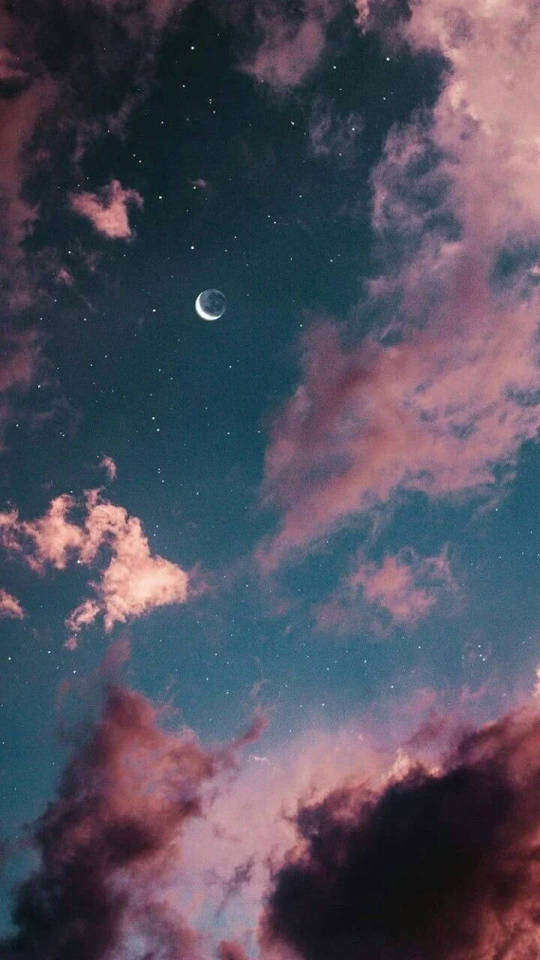
Sometimes I see something dark on the news, very dark.. I'm in tears, I'm anxious, I'm asking the heavens why these things happen... how is it fair? I'm praying, I'm sucked in and can't look away from what I'm seeing because it feels like I have a duty to at least witness the suffering if others have to go through it. There have been times it's just debilitated me; until I realised something-
I am worth more to the world, the people suffering included, by focusing on fostering beauty, joy & goodness in my own life. I'm not helping the world by crying in my bed unable to feed or take care of myself because I'm distraught about something I saw on my phone. It's only impairing my ability to remain in a high vibrational state that I can create & share with the world from. People who truly make a difference are often the ones who either innately embody or have cultivated a very Solar nature- 'water off a ducks back'. It shouldn't be about ignoring or suppressing emotions, so much as using emotion wisely.
This doesn't mean it is best to completely ignore the world or be cold or 'heartless', but moreso that you need to be holding a torch for yourself in order to even begin to light the way for others. Those who are suffering generally do not want others to suffer for them (especially if they can't physically do anything to help)- that only creates... more suffering. I know in times of my own suffering, not once did I think 'damn, I wish someone was as sad and destitute as me' lol
I thought 'man, I really would love to be around people & circumstances that are positive, uplifting & nourishing so that I can feel that warmth again'.
If every single person in the world was utterly debilitated and absorbed in other realities, other people's lives, neglecting their own 'karma' & their own blessings, who would be there for people to look to for hope? Who would be the blueprint for what happiness actually looks like? In a world without strong, solar entities, who can those who are suffering look up to to imagine a better life?
Fill your own cup first!


Sometimes the best thing you can do for the world, is to manifest your own beautiful, magical, pure life- whatever that means for YOU. Build your own foundation so that you can be an inspiration & comfort for those who need it, while being stable and strong within your own being.
A lighthouse doesn't go out to sea and get into the storm with the ships. It doesn't go chasing the ships down to save them. It simply stays where it is, strong, radiating light and indiscriminate- unconcerned with who 'gets' the light. Trusting that the universe is working its magic and the right people are benefiting from your radiance. That is what staying true to yourself & your own unique destiny looks like.
I see too many people (myself included, but working on it..) with bleeding hearts. Completely lost and overwhelmed by the struggles, thoughts, opinions, beliefs & chaos of others, feeling as though they can't just sit and watch, they have to do something about it. Or if they can't do something about it, they have to at least feel it, delve into all that emotion. Instead of being the lighthouse and realising that nurturing yourself = raising the vibration of the world, which = one more person living in truth & happiness for others to look up to- they are missing that opportunity and becoming drained/psychologically in pain.
Do what makes you happy. It's so simple, yet so.. not! It's a skill, and it takes discipline & sometimes what feels like active rebellion in order to refrain from abandoning yourself and getting lost in something or someone else; whether that thing is positive or negative... 🌸
Very long story short - the most helpful gift you can give to the world, is your joy & faith in your own destiny.
To anyone who read all this, have a beautiful day and if you can, go do something fun lol, or create something ♡
note: I just want to make sure it's clear that I'm not saying nodes = bad & Sun = good or anything like that! Every planet, every celestial force plays an important role in life on Earth and the nodes have their own magic too. This post is just talking about the importance of staying in touch with your Solar light rather than getting completely and utterly lost in the pull of the nodes. I also want to add that of course sometimes there are unique occasions, where plunging into the darkness with somebody else is exactly what you need to do- but if that's the case, that'll be a part of your 'destiny', so even still you will be embodying your light if that makes sense. Never abandon your light.
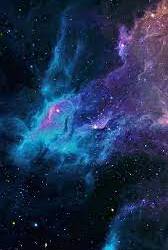

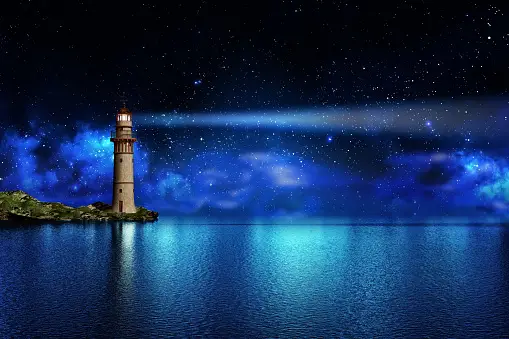
#vedic astrology#nakshatras#astrology#rahu#ketu#nodes#sun#solar#vedic astro observations#vedic astro notes#aesthetic#sidereal astrology#astro notes#esoteric
88 notes
·
View notes
Text
In news to no one, a lot of policy activism is done without considering the politics behind the policy. Take fracking bans in the US. Is there a coalition big enough to support some form of ban on fracking? Yes - or at least there was, it is something that happened after all, it must be viable in some form.
Why is a fracking ban political viable? Because 100% of that coalition is technocratic global warming advocates pushing for carbon taxes and mixed-energy grid transitions, comfortable with limited reductions in living standards in order to achieve the goal? Lol fuck no. That is some of them! Oil as an energy source is a carbon emission, it isn't great, it is a valid reason to pursue it. But they are a minority of the coalition. Some of them are "hard enviro-left" types who also oppose nuclear for example, and either aren't very coherent or are coherent-enough full stack degrowthers, fringe but real. But more, I bet the majority, are environmental NIMBYs - you can ban fracking because they don't like the idea of it happening here. They will support policies to restrict development in new areas of the US that might change the natural environment and cause issues for them close to home.
What they will not support is anything else that makes the policy viable.
They will also block solar installations on NIMBY grounds, or things like transmission lines. They won't actually support carbon taxes or radical changes in how they live to reduce environmental impacts. And most importantly, they will not actually support higher energy prices. LIke at all. The moment you try to "ban" oil or gas imports, this coalition is a ghost. Which means the only impact from a fracking ban is to shift production from the US to other countries - ones that, on average, have a worse track record of environmental enforcement to boot. It doesn't achieve anything at all for the goal of global emissions. The power has to come from somewhere after all! There is no coalition for lowering energy consumption.
This obviously isn't any issue for some random poster online, you aren't dictating policy, support your ideal approach! I support government deployment of exowombs and Kowloon Walled City 2: Immigrant Enclave Boogaloo, trust me I get it lol. But if you are an actual political operative, with influence in policy, understanding this dynamic is literally your job. Spending political capital on fight X, that only does anything if you also win fight Y & Z, and you have no hope of winning those, is deeply counterproductive. There is no substitute for smart strategy. (And it isn't like there aren't better ideas out there - permitting reform for green energy projects is like sitting on the table guys)
33 notes
·
View notes
Text
☋☋ ☋ मघा Magha Nakshatra मघा ☋ ☋☋
Past lives, ominous, traveling inward

Hughes Merle's Mary Magdalene in the Cave, 1868. The reptilian arms are not part of the original painting.
The Basics Ruling planet: Ketu Ruling deity: Pitris Yoni: Male rat Symbol: Royal throne
Rahu and Ketu We can't talk about Ketu without talking about Rahu as well. Rahu and Ketu are referred to as the lunar nodes in astrology. They aren't physical objects in space like Jupiter or Saturn. They are calculated points. However, for ease of communication, Rahu and Ketu are often referred to as planets anyways.
The lunar nodes are determined by the orbits of the sun and the moon. The intersections of the orbits of the sun and moon as apparent from Earth tell us the position of the nodes at a given time. It takes about 18 months for the nodes to journey through a single zodiac sign and about two decades for them to cycle through all twelve.
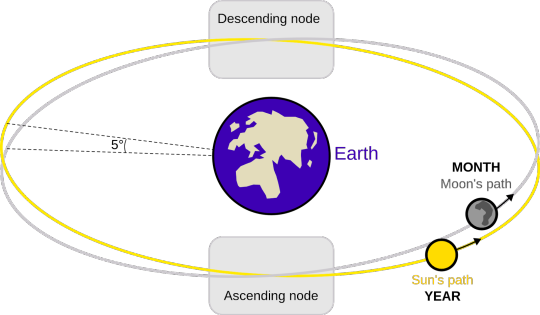
Image from Wikipedia.
Since the nodes are located where the sun and moon overlap as seen from Earth, they are associated with eclipses. Rahu (the north, or ascending node) swallows the sun during a solar eclipse and Ketu (the south, or descending node) swallows the moon during a lunar eclipse. We can further assume that the nodes are always exactly 180° apart, or opposite to, one another. If the north node is in Sagittarius, for example, the south node will always be in Gemini.
The nodes in astrology deal with karmic destiny. The nature of your south node placement shows who you were in a past life, what you have previously mastered and now know in your bones to be true. Your north node placement shows what you are working towards in this life, what you strive to accomplish, the lessons you are here to master.
Rahu and Ketu In Mythology According to Vedic mythology, Rahu and Ketu started out as one being, a demonic serpent called a rakshasa. They were separated into two beings as punishment. During a ceremony to honor the planets, Lord Visnu churned up the oceans to create a divine nectar for them to drink and become immortal. When the planets (or deities) lined up to drink, the demon snuck under Visnu's nose to drink some of the nectar for himself. Rahu/Ketu had already ingested the immortal drink before they were caught in the act - becoming accidentally undying. Furious, Visnu beheaded the demon but at that point it was too late. Rahu (the demon's head) and Ketu (the body) become two entities and were cast to opposite ends of the sky.

A depiction of a rakshasa (demon) done in Yakshagana, a traditional style of theater prominent in southern India. Image from Wikipedia.
Rahu, being the head, is arguably more responsible for the separation of the demon into two parts. As the head, Rahu is consumptive by nature. This is why one's natal Rahu placement indicates what they are after in this life. The devouring head symbolizes our insatiable desire to obtain more and become more.
Rahu's willingness to ignore boundaries to obtain the immortal nectar is telling - he has no regard for authority. He is not much of a leader himself, more so interested in mocking those holding positions of power. In this way Rahu is hypocritical because he attacks the character and methodologies of those in power yet he himself demonstrates childishness and irreverence. When he is rendered a head without a body, he is left an eternal troublemaker.
When separated from his head, bodily Ketu is doomed to forever long for his other half - reminiscent of the past being the past, something we can never go back to and simultaneously can't shake the memory of. We master our Rahu and Ketu by connecting our heads with our bodies - that is, by balancing past with future, applying ancient knowledge stored in the body to achieve future-facing objectives the head seeks to fulfill.
"Ketu's permanent longing for wholeness is a consequence of Rahu's excited refusal to respect conventional boundaries. As a result of Rahu's wildness, Ketu the Dragon-Tail Cauda Draconis is forced to gaze with eternally unsatisfied longing at His dear severed partner Rahu the Dragon-Head Caput Draconis." - Barbara Pijan Lama, Vedic astrologer based in Portland, Oregon

A makeup look done by smeyuka on Instagram. Note the grey/smokey tone of the face and red emphasis added to the eyes.
In Phaladeepika, a classical Sanskrit text on Vedic astrology, Ketu is described like this:
"Ketu is fiercly red-eyed, is venom-tongued (speaking venomously), and without a body or disembodied, he is violent (using weapons, wants to scare), and ignoble (low, fallen, no social contribution, uncultured, wild, intense), his complexion is smokey (ominous), he is a constant smoke drinker (using opium or marijuana), his body is covered in scars (not cooperative), not fatty (emaciated, thin, angular), and cruel (unforgiving)."**
** what is in paranthases are notes on different ways the text can be translated. Watch Vic Dicara's videos on Rahu and Ketu.

Artistic rendition of Ketu/Kathoo in E.A. Rodrigues's The Complete Hindoo Pantheon. Image taken from Wikipedia.
Some people think that what we experience as eclipses are actually Rahu and Ketu taking revenge for their separation. Eclipses are times of sudden change - when the sun is obscured by the moon or vice versa, the atmosphere on Earth is very different. Having witnessed the total lunar eclipse of 2017, I remember things turning a grey/yellow/brown hue, and the air taking on a kind of hazy quality (but I believe this was due to wildfires). If you have ever seen the movie Enemy with Jake Gyllenhaal, it looked like that.

Still from Enemy (2013)
Here is a description of a solar eclipse by Dr. Rick Feinberg, astronomer and science communicator (now retired):
"Measurements made at recent total eclipses put the illuminance at totality around 5 lux, comparable to civil twilight. The sky is still some shade of silvery, purply blue. In contrast, the black sky on a night of full Moon is 10 times darker still, less than 0.5 lux. Yes, bright planets –– especially Venus and Jupiter –– are obvious in twilight, but stars? I don’t like to waste valuable time during totality looking for stars; the only time I saw one was on August 21, 2017, when 1st-magnitude Regulus glimmered just to the left of the totally eclipsed Sun.
It certainly feels like it gets as dark as night during the final minute before totality, but that’s just because your eyes haven’t had time to adjust. The changes in illumination at the beginning and end of totality happen much faster and more dramatically than at dusk and dawn, respectively."
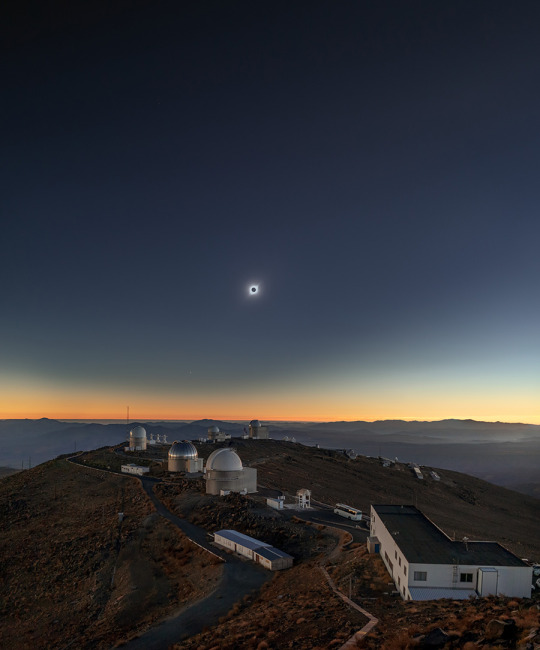
Image of the 2019 solar eclipse above the European Southern Observatory in Chile, taken by Mahdi Zamani.
Non-dualism and the Ouroboros The nodes are inseparable opposites, both two and one - like how the past and future becoming one in the present. In this way they demonstrate the concept of non-duality. Non-dualism is a philosophical concept observed in many spiritual and religious traditions, particularly ones that originated in the East such as Buddhism, Hinduism, and Taoism. The non-dual perspective holds that there is no fundamental separation - between objects, energy, people... it's all one.
“All things are permeated with God, just as all things are permeated with air.” – Hildegard of Bingen
Ketu's rulership over Magha suggests that people with heavy influence from this nakshatra in their birthchart are deeply spiritual and/or philosophical. If you think about Rahu and Ketu as being an axis - that is, talking about the same topics but having opposite opinions on them - Rahu expands outwards, forever seeking to consume and grow materially. Ketu expands internally. The expansion of Ketu looks like material poverty from the outside, but Ketu is not interested in earthly objectives. Rahu wants to grasp and Ketu wants to release. By releasing attachment to the physical, Ketu finds bliss.
Rahu's knowing is of the head. It is entirely cerebral. Ketu's knowing is bodily. That is, it is completely intuitive and feeling/sensory-based. In the world we live in, computational and logical thinking is (for better or worse) king. For this reason, if you have prominent Magha placements, I wouldn't be surprised if you feel like you either 1) don't belong in this world or 2) have been here before, perhaps many times over. Ketu, symbolizing past lives and knowledge gained from them, wanders the earth, aimless, forever drifting. He finds nothing on earth to be of substance.
While Ketu-heavy or Magha-heavy people can possess deep inner knowing that endows them with a certain type of respect, this same trait can be the source of an overly apathetic attitude when taken to an extreme. Detachment is all well and good, but unless you're truly the type to pursue a monastic or nomadic path, it's necessary to keep your feet on the ground at least a little bit to live in a well-rounded way. Ketu people are faced with a challenge to ground their intuitive knowledge and bring what they find on their travels inward out to the world around them.
One symbol that is steeped in unity and oneness is the ouroboros. Depicting a serpent or dragon devouring it's own tail, the ouroboros has appeared in ancient Egypt, Mexico, India, as well as Hermetic and Alchemical texts. The serpent chases its continually regenerating tail in an eternal circle, just as Rahu and Ketu are condemned to chase one another from opposite ends of the sky forever.
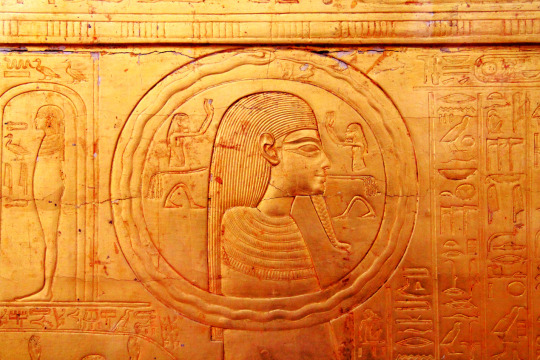
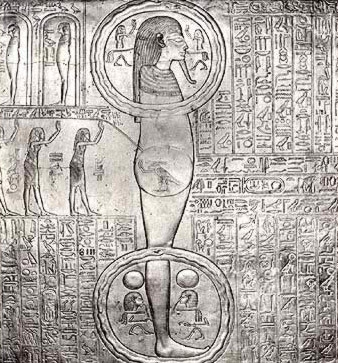
Two ouroboros symbols shown encircling a figure in An Enigmatic Book of the Underworld, funerary text and shrine discovered in King Tutankhamun's tomb. The figure has been speculated to be the mummified form of King Tut himself, while some think it is the unification of Ra and Osiris.
An Enigmatic Book of the Underworld is regarded as the place of the first appearance of the ouroboros, dating it to at least 14th century BCE. It is thought that the book illustrates the replenishing of the solar disc - the ancient Egyptians believed that the sun would use up all of it's heat and energy during the day and had to 'recharge' at night. At night, the Sun was said to pass through the same region of death where the gods were believed to reside. Their souls would follow the Sun as he cycled above and below the horizon while their bodies remained in the underworld. Time was seen as cyclical repetitions rather than a linear unfolding. The ancient Egyptian's understanding of time was based on their observations of recurring natural events like the Sun's daily journey across the sky and the annual flooding of the Nile.

An illustration of the ouroboros in an alchemical text from around 400AD.
The Alchemists believed that all physical materials on Earth originated from the same original source material and could be differentiated by their varying levels of purity. Gold was held as the most pure and 'perfect' form of matter, which is why the Alchemists sought to create it using lower quality metals such as lead - a process called chrysopoeia. The desire to create gold from crude materials that is central to Alchemy is largely metaphorical. The broader goal of the Alchemists was to evolve the human soul through deepening the understanding of one's self. The ultimate objective of alchemy was to transform personally into someone 'greater' than you were before. More knowledgeable, powerful, physically healthy or beautiful...
The Pitris The deities ruling Magha are the Pitris, spirits of the paternal ancestors of humanity - the word 'pitris' is Sanskrit for "fathers."
The word Magha can mean gift or it can mean power. As it relates to Magha nakshatra, it means gifted power - that is, inherited power. Each nakshatra has it's own associated sutra, which are kind of like condensed teachings. The translated sutra for Magha is "The forefather's gift of power needs demoralization, to ruin."
Vic Dicara explains the lesson of Magha nakshatra as illustrated in it's sutra - how to be victorious without getting wounded. The sutra for Magha is saying that the way to defeat your enemies is to prevent the battle from happening in the first place. And how do you do that? By bullying them, basically. Magha natives have the power of the forefathers (Pitris) behind them, which they brandish and threaten their potential opponents with. Before a single punch has been thrown Magha puffs out his chest, letting his opponent know that he has friends on the other side backing him up - think Dr. Facilier from the Princess and the Frog.

Magha's Yoni: the Male Rat The word "yoni" in Sanskrit refers to the vagina. The word can be used to refer literally to female genitalia, but it also has a deeper meaning relating to source material - the empty 'womb' out of which the universe materialized.
Each nakshatra has a corresponding yoni assigned to it. The yonis of the nakshatras describe their primal and sexual nature - how they behave when backed into a corner and the different ways they behave in the bedroom. In the vedic astrological system, the yonis are depicted as different types of animals - appropriate, considering the aspects of the human personality they attempt to describe and categorize.
Magha's yoni animal is a rat. Rats are inquisitive, playful and sociable by nature. They are intelligent and, as pets, trainable. They are hygienic, keeping themselves clean by grooming their tails, fur, and faces. They also do everything quickly - I've never seen a rat move in a leisurely way.

Rats are venerated at the Karni Mata temple in Deshnoke, India. Large saucers of milk are left out to keep them fed. The temple is a monument honoring the coexistence of life in every form - which is why rats are treated reverence here rather than seen as pests. Image by Paolo Bampani.
The rat signifying the primal nature of this nakshatra suggests a few things. We can easily surmise that Magha people are curious, likely quick-witted due to an above-average intelligence, and energetic. We can also guess that Magha people are adaptable - think about the poor conditions rats are able to survive in. An additional quality of rats which I think relates to Magha is their use of their whiskers to both balance themselves and maneuver around objects in their environment - they don't have the best eyesight and rely heavily on the sensitivity of their wire-y mustaches. This hearkens to Magha's bodily, ketuvian intelligence.
At first, the personality of the light-footed and friendly rat seems to clash with the ancient wisdom Magha has. When I think of someone in touch with their forefathers and past lives, I think of someone who moves slowly (literally and metaphorically), approaching and completing all tasks with patience, precision, and caution. The good-natured and hyperactive qualities of the rat combined with Magha's connection to protective (paternal) ancestors, dispersing and wandering ways of Ketu, and transforming power of the eclipse paints a particular personality profile. This is a person who has their head in the clouds and could rip you to shreds - if you provoke them first.
The Symbol of the Royal Throne Magha is considered to be an auspicious nakshatra - that is, it brings positive things to whatever planet is placed here. The rulership of the Pitris over Magha cements their innate power. It is one thing to be a powerful person because of the things you have accomplished, but when someone is powerful because of their ancestors has royalty in their blood. It can never, ever be taken from them because it is simply who they are.
Magha spans 0°00' to 13°20' Leo. Leo is the most regal and royal of all twelve zodiac signs. The most common gripe people have with Leo's is their pride and self-centered attitude. The thing is is that Leo is ruled by the Sun - the literal center of our solar system. Resenting a Leo for shining is like disliking the Sun for burning. Of course, egotism has the potential to run rampant if a Leo person has not matured very much, which is the shadow side of this sign. Oftentimes, though, you will find that the warm, glowing self-sureness of Leo's triggers the insecurities in those around them, causing them to lash out.

The Iron Throne from Game of Thrones.
The symbolism of the throne for Magha should come as no surprise. Those who sit and have sat in thrones throughout history were usually born into that role as opposed to being appointed - bringing us back to the ancestral power brought on by Magha's connection to the Pitris.
Song for Magha: You Don't Mess Around with Jim by Jim Croce And they say... You don't tug on Superman's cape You don't spit into the wind You don't pull the mask off that old Lone Ranger And you don't mess around with Jim
This song talks about a local legend who's reputation precedes him. It is known so well that you don't cross him that doing so would be as obviously foolish as spitting into the wind. While Jim, the menacing figure the song centers around, is described as being big and dumb - traits that aren't as applicable to Magha - his reputation as someone you don't want to mess with fits perfectly with the power of this nakshatra. Jim, just like Magha, has won the fight before it started because you're probably too intimidated to approach him in the first place. Maybe Jim had the Pitris backing him up, too.
-------
Check out Vic Dicara and Claire Nakti on YouTube - both influential figures in the vedic astrological community.
71 notes
·
View notes